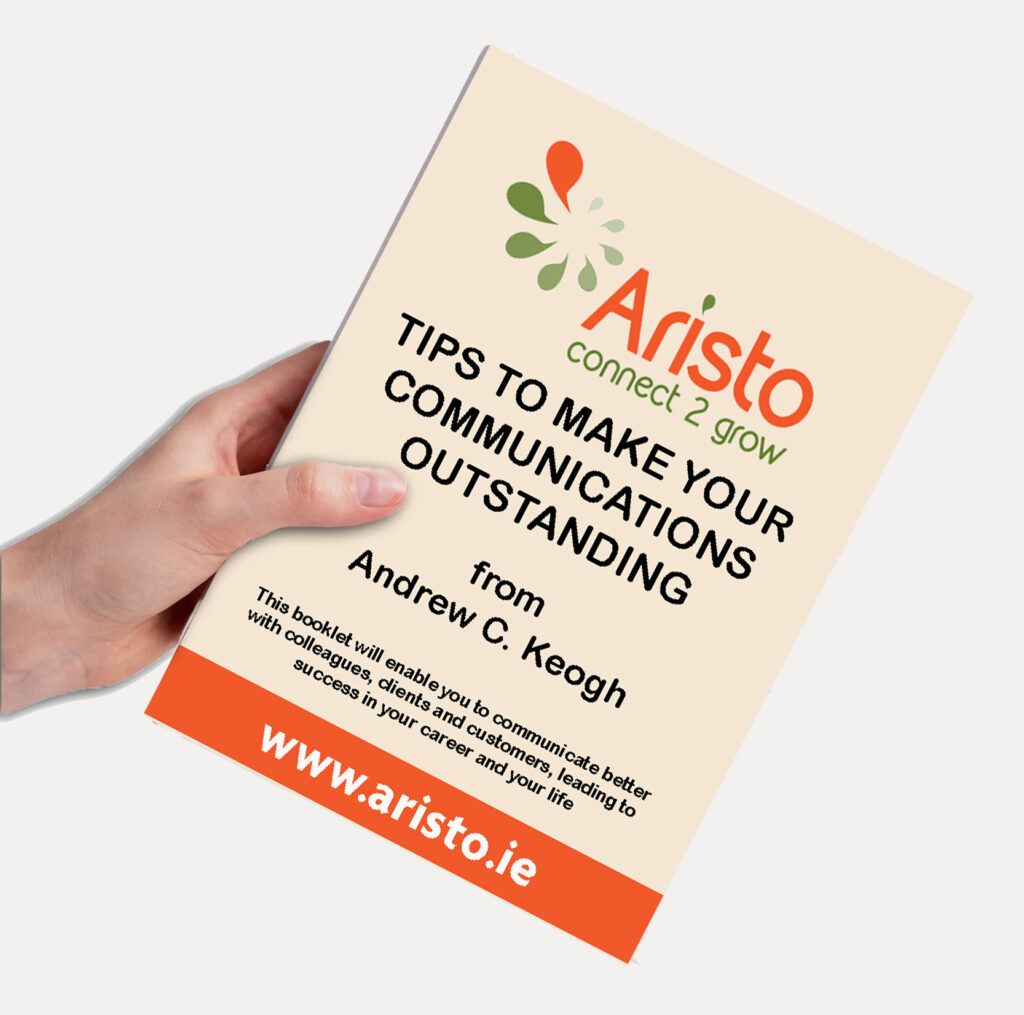
(Are you a reluctant salesperson?)
More often than not, the people I work with would not describe themselves as salespeople; they are ‘C suite’ people, or highly technical skilled people who are now expected to sell.
Is this why they went to college, got a degree and created a level of experience in the workplace?
Yet it’s the experience they have gained along the way which is the highly valuable attribute that prospective customers wish to engage.
They wish to engage with someone who understands their problems, their issues, and their concerns and who has a depth of knowledge and experience, giving confidence to the prospect that here is someone who can help my organization and me.
The demonstration of your expertise should not be exhibited in a boastful or brusque way; neither should it be given in a shy, retiring, hesitant fashion.
The prospect wishes to hear from someone who can engage him or her in a conversation that fleshes out the issues that they have. At the same time, articulates confidently how you or your organization are the people who can help them solve their particular problem.
Boring Presentations:
What I hear all the time are boring presentations that have been churned out, time and again, without any effort to tailor the pitch to the potential client’s needs or desires.
How can you judge your level of engagement?
Think about your most recent presentation and answer these questions honestly.
- How quickly did your listeners start checking their devices?
- Were they typing in the exciting stuff you were saying or ordering their lunch online?
- Is there good engagement, eye contact, nodding, smiling?
- Are you the one who’s doing all the talking with little or no interaction?
Let me explain what I’m getting at simply!
Imagine if you went on a “first date”, and over dinner the person on the other side of the table spent the whole evening telling you how wonderful they were and never asked any questions about you. Would you be likely to arrange a second date?
Business meetings are the same, spend the time talking about you and your organization and there will be no second date.
Spend the majority of your time engaging your audience in a conversation about their issues and the next meeting will be forthcoming.
Why? Because you listened to them and their concerns; the others just wanted to sell them stuff.
Helping people to Buy:
People want to buy solutions that solve their problems and make their life easier.
Emails that are selling you stuff are unlikely to be opened.
If the house phone rings now it’s more than likely someone who’s trying to sell you something or scam you; fewer and fewer people are answering their landlines. (They say if it’s necessary or urgent they will leave a message).
Walk in the shoes of the other person:
Before you plan your next sales presentation, answer these three questions:
Who is my audience?
1. Economic Buyer
Is this a presentation to the Economic Buyer?
(The person who can sign off on things irrespective of budget)
2. An Influencer (Champion)
Someone who is experiencing problems that you can fix and concerned enough to promote your solution to the Economic Buyer
3. Administrative Buyer
Purchasing, Finance, Health and Safety etc. etc.
(These people cannot make the decision to buy your product/ service, but they can support or hinder your progress).
The Problem you Solve:
Now your expertise comes into play, having done research online or identified an issue in a previous exploratory meeting, or perhaps based on your knowledge of their business having worked with similar customers.
You can now prepare a presentation that starts immediately to discuss the issues that are of concern to your audience. Ensuring immediate engagement and encouraging interaction and conversation from the get-go.
The problem conversation allows you to demonstrate your knowledge and experience, not in a boastful way but in a way that infers on you the title of expert.
Tell Your Audience how they are Better:
The final question you need to answer in preparation for creating your presentation is: “How will the person/organization be better as a result of your intervention?”
- More Productivity
- Less Absenteeism
- Reduced Production Downtime
- Increased Compliance
- Reduced Bills via Energy Savings
- Healthier Crops, Healthier Families
The skill of painting pictures for your prospect of How they will be Better is the step I find missing in the majority of Pitches and Presentations I have witnessed.
I will explore this critical aspect of presenting in a future article and in particular in my upcoming workshop at the end of September: “Create a Killer Elevator Pitch”.
If some of what I discussed in this article resonates with you, would you or your team members like to receive advance notification of my upcoming Workshop(s) as numbers are limited to ensure personal attention? Please CLICK HERE or email me at andrew@aristo.flywheelsites.com
or connect us on LinkedIn




